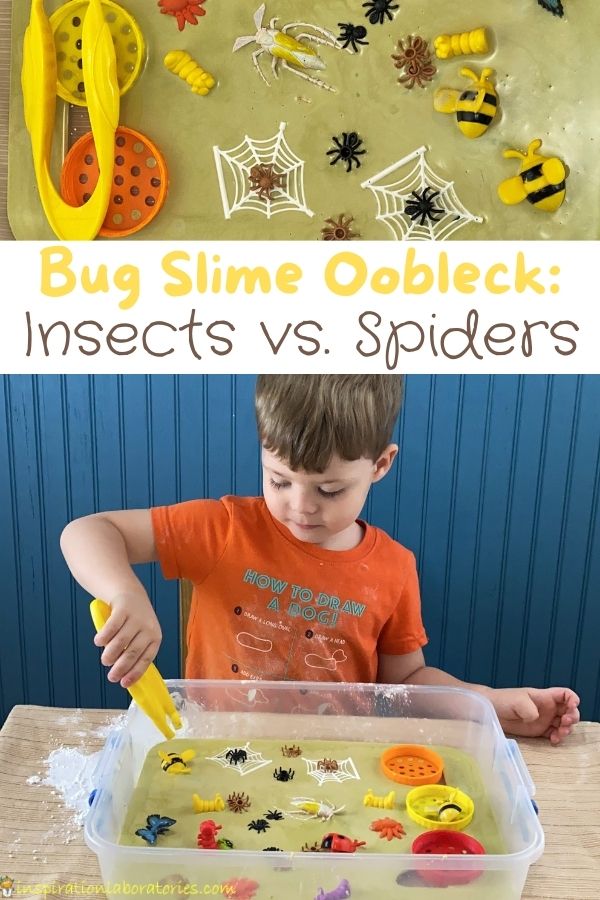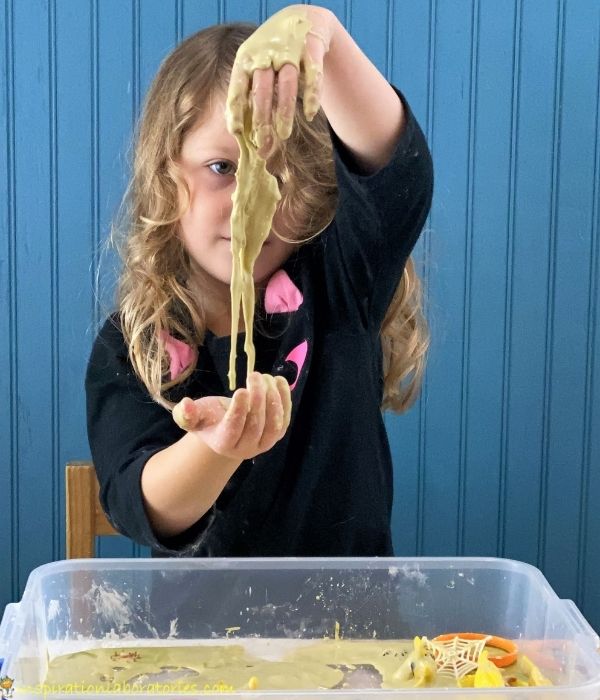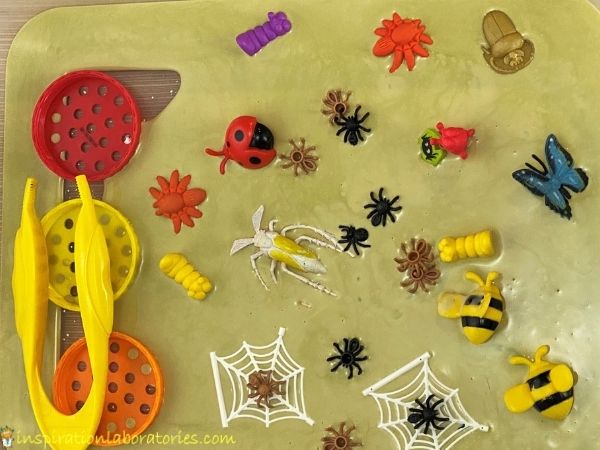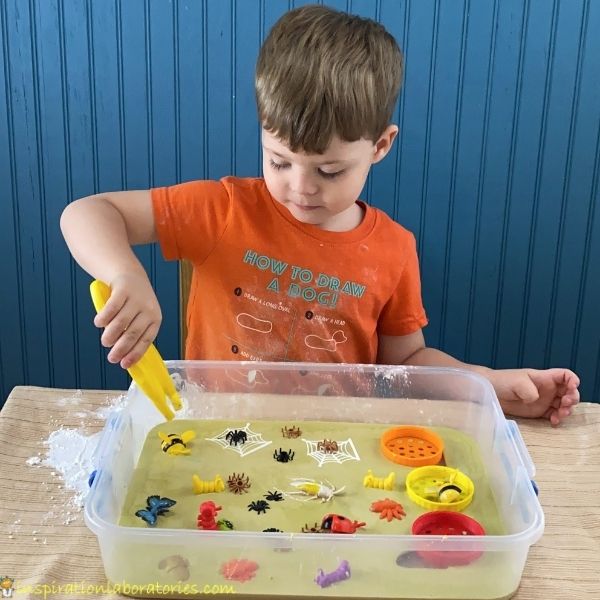Bug Slime Oobleck: Insects vs. Spiders
Let’s explore the differences between insects and spiders with a great sensory science activity. Bug slime oobleck is easy to make with cornstarch and water. Add some tools and get ready for some squishy fun. I get commissions for purchases made through the affiliate links in this post.

Gross Science Experiments by Emma Vanstone

My friend Emma from Science Sparks sent us a copy of her latest book, Gross Science Experiments: 60 Smelly, Scary, Silly Tests to Disgust Your Friends and Family. I’m not kidding when I say the experiments and activities are disgusting. My kids think they are hilarious. I love how Emma has taken a kids love of all things gross and used it to teach science concepts. Learn about the human body, make gross foods, prank your friends, investigate bugs and grubs, and more.
Today’s activity comes from Emma’s section on bugs and grubs. It’s a fantastic way to learn about creepy crawlies. (And in my opinion the least gross chapter in the book.)
Bug Slime Oobleck
We love making cornstarch slime, also called oobleck. In fact, we have a whole collection of oobleck recipes – more than 25 ways to play with cornstarch and water. Add this insects vs. spiders oobleck to our list.
Supplies Needed
- 2 cups of cornstarch (plus more on standby)
- 1-2 cups of water
- washable liquid watercolors or food coloring (optional)
- spoon
- plastic insects and spiders
- large bowl or container (a baking dish is a good size)
- tools like tweezers, strainers, and small bowls
How to Make Bug Slime Oobleck
In your container, add 2 cups of cornstarch. Stir in about 1 cup of water.
Stir in a few drops of washable liquid watercolors or food coloring. (Food coloring can stain clothing.)
Your mixture should be a very thick liquid. If it’s too thin, add more cornstarch. If it is too thick, add a bit more water.
The consistency is just right when you can squish the slime into a ball with your hands. When you let go, it will drip through your fingers.

Add the insects, spiders, and tools to your container and invite your child to explore.

Encourage him to pick up the bugs using the various tools you provided.

You can ask her to sort the bugs into categories – by color, by type, etc.
Use your hands to squish and play with the oobleck.
The Science Behind Oobleck
Oobleck is a non-Newtonian fluid. It doesn’t behave like a “normal” liquid. It has properties of both a solid and a liquid depending on the amount of stress applied. When stress is applied, the corn starch and water mixture acts like a solid (your hand can’t go through; you just squish it like play dough). When constant stress is not applied, the mixture acts like a liquid.
Oobleck is made of long chains of molecules (we call this a polymer). The oobleck flows like a liquid when the chains are stretched out. When the polymer chain is pushed together, they stick to form a solid.
Is It an Insect or a Spider?
As your child is exploring the bug slime, talk about the critters he sees. What is that bug? Is it an insect? Is it a spider?
Insects have 6 legs. Spiders/arachnids have 8 legs.
Insect bodies are divided into 3 segments (head, thorax, abdomen). Spiders bodies have 2 segments (cephalothorax, abdomen).
All insects have antennae; most have wings. Arachnids have neither.
All arthropods (insects, arachnids, and others) are invertebrates with jointed legs, exoskeletons, and segmented bodies.
More Insect and Spider Activities
I is for Insect Investigations
Butterfly Life Cycle Foldable Craft
Spider STEM and STEAM Activities
Subscribe to the Inspiration Laboratories newsletter. Each issue has exclusive hands-on science explorations for children, a recap of our latest activities, and special resources selected just for you!

Leave a Reply